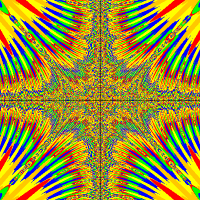Hey I`m currently working on a "3D" game created with Greenfoot. It is based on the techniques Wolfenstein 3D used to create a 3D effect.
That means that I basically use a top-down perspective. In every acting-cycle I look how far the wall in front of me is away from me. Then I calculate the height of the Wall and draw a rectangle with this height on my screen.
This is the code I use for that (and it works)
Drawer.class is basically a canvas.
The method is started in the act method.
However I obviously also want to draw the walls that aren`t directly in front of me. I tried to use this code for doing that.
However now he always thinks he already is in a wall and the while-loop is never entered and therefore direction stays 0 and the rectangle get drawn at full height.
I do not understand why the player thinks he is in a wall.
Thanks for the help
Tritos
1 2 3 4 5 6 7 8 9 10 11 12 13 14 15 16 17 18 | public void drawSightF() { GreenfootImage drawerImg = getWorld().getObjects(Drawer.class).get(0).getImage(); drawerImg.clear(); int distance = 0; int xSave = getX(); int ySave = getY(); while(!isTouching(Wall.class)) { distance = distance + 15; move(10); } int h1 = (int)(900.0*((1400.0-distance)/(1400.0))); drawerImg.fillRect(690, 450 - (h1/2), 10, h1); setLocation(xSave, ySave); } |
1 2 3 4 5 6 7 8 9 10 11 12 13 14 15 16 17 18 19 20 21 22 23 24 25 26 27 28 29 30 31 32 33 34 35 36 37 38 39 | public void drawSight() { GreenfootImage drawerImg = getWorld().getObjects(Drawer.class).get(0).getImage(); drawerImg.clear(); int distance = 0; int xSave = getX(); int ySave = getY(); for(int n = 0; n <= 90; n = n + 10) { turn((int)(n)); while(!isTouching(Wall.class)) { distance = distance + 15; move(10); } int h1 = (int)(900.0*((1400.0-distance)/(1400.0))); drawerImg.fillRect(690 + n, 450 - (h1/2), 1, h1); distance = 0; setRotation(getRotation()-(n*2)); while(!isTouching(Wall.class)) { distance = distance + 15; move(10); } h1 = (int)(900.0*((1400.0-distance)/(1400.0))); drawerImg.fillRect(690 - n, 450 - (h1/2), 1, h1); distance = 0; setRotation(getRotation()+n); } setLocation(xSave, ySave); } |





